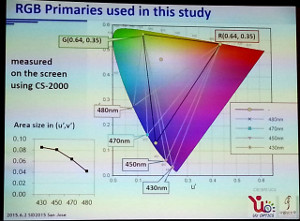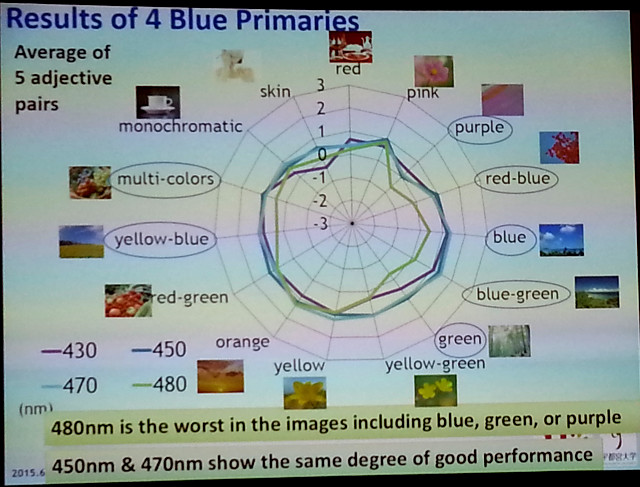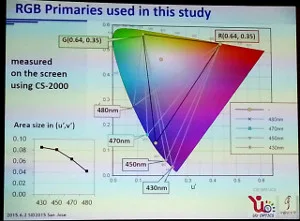The current specification for the blue primary in the 2020 gamut is 467nm, but there is much industry discussion as to whether this is the best wavelength, given commercial considerations. The main concerns are the blue and green color filters used in LCD displays. When a quantum dot solution is employed to reach the gamut of Rec 2020, the FWHM of the quantum dots (effectively the ‘peakiness’ of the emissions) is in the 25-40 nm range. With the green primary at 532 nm, that means there is some overlap in the stimulation. And, the green filters have a little tail that extends into the blue. The bottom line is that this leakage pulls the blue and green primaries in from the spectral locus so 100% 2020 cannot be achieved.
The solution would be to move the blue primary to 450-455 nm to allow more separation and a higher percent of 2020 coverage using existing color filter manufacturing processes. Proponents, like Nanosys and 3M, feel this is easier than trying to change processes in the massive color filter industry. (See video on this at: Nanosys Calls for Rec 2020 Change and Explains Cadmium Issue.)
At SID, there was a paper presented by Utsunomiya University (paper #17.2) that took an experimental and image perception approach to this question. In the experiment, images were prepared with the blue primary at 480, 470, 450 and 430nm and subjects were asked to grade the images for preference, naturalness and visual comfort – a Kansei approach. It should be noted that that the red and green primaries are not that wide so none of these images are close to a 2020 color gamut.
The first chart shows the gamut for the 4-primary test (a second test with 3 primaries was done too). The second chart shows the results. Basically, 450 and 470 nm images scored about the same, but 450 includes more of the u’v’ color space.



